Bodh Gaya is a place of utter significance among the Buddhist. As, it is one of the 4 most important Buddhist religious places. Bodh Gaya was most famous for the Mahabodhi Temple – the temple which has “The Bodhi Tree” in it’s premises. Where Buddha attained enlightment during his deep meditation. Over the years, Buddhist from across Vietnam, China, Bhutan, Nepal, Sri Lanka, Japan and other countries have commissioned the construction of Buddhist Temples in Bodh Gaya. As a result of which, today Bodh Gaya thrives with several different Buddhist Temples, of different architectural elements and beautiful artworks. Visiting Bodhgaya is like walking through an open gallery.

On our most recent trip to Bihar, we finally visited Bodhgaya – a place we grew up not very far from. Yet, never got to visit. This helped us not only marvel at the beautiful temples and tranquil atmosphere of Bodhgaya but also understand the immense significance of Bodh Gaya. Let me take you with me on a one day tour of BodhGaya, temple hopping in Bodh Gaya.
This temple hopping reminded me of the walking tour of Chiang Mai City that I did on my 2 weeks trip to Thailand. In which I saw countless Buddha Temples. But they all reflected Thai architectural style. But, Bodhgaya is the only place in the world where you get to see Buddhist temples of all different international architectures and significances.
History of Bodh Gaya

Bodh Gaya is one of the most prominent Buddhist religious places. The 4 most important Buddhist tourist places are –
Lumbini, Nepal – Siddhartha Gautam (who later became Gautam Buddha) was born here in 624 BCE
Bodh Gaya, Bihar, India – This is where Siddhartha attained his ultimate enlightment in 531 BCE and became Gautam Buddha
Sarnath, Uttar Pradesh, India – Gautam Buddha gave his first sermon in Sarnath
Kushinagar, Uttar Pradesh, India – Where Gautam Buddha died and finally attained “parinirvana”
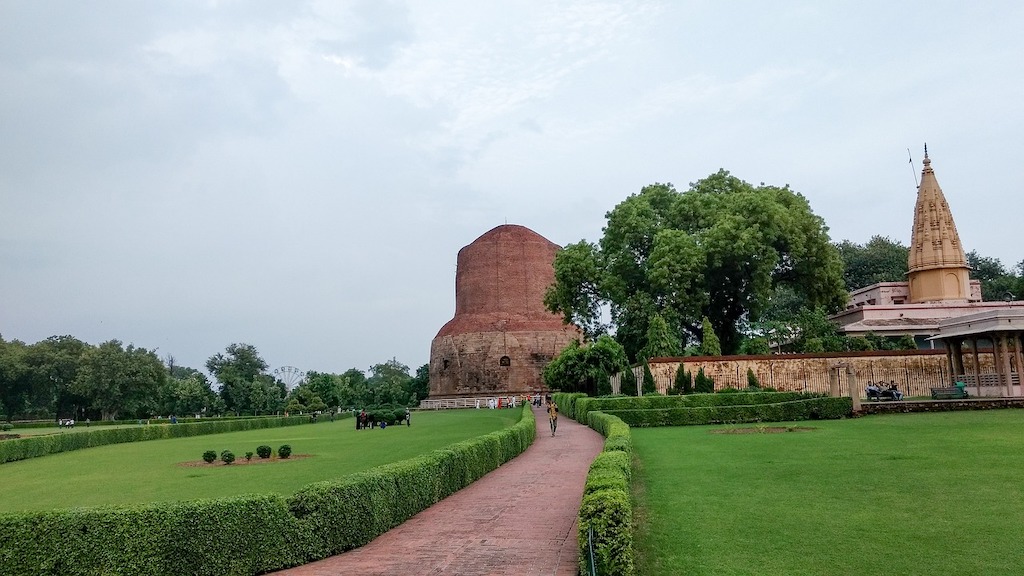
Lord Buddha meditated under a Peepal Tree for 6 years in Bodh Gaya. After which he attained enlightment. The word “Bodhi” means “Knowledge”. Hence the tree got it’s name – Bodhi Tree. Later, the Mahabodhi Temple was erected around the Bodhi Tree.
As the Bodhi Tree grows old, it is replaced by it’s next generation. As per an interesting legend, the wife of Emperor Ashoka tried to get the first generation Bodhi Tree cut down. But, she was unsuccessful. Another tree emerged from near the roots of the main Bodhi Tree and replaced it. Which is the second generation Bodhi Tree. It lived for 800+ years.
The second time, King Shashank of Bengal tried to destroy the Bodhi Tree eight from it’s roots. After cutting down the branches, he even went ahead and burnt the roots of the tree. Yet, another Bodhi Tree emerged in a few years and took it’s place, surviving for another 1250 years to come!
Like this, one Bodhi Tree is replaced by it’s next generation whenever any natural disaster or calamity has destroyed it. But it never dies!!
Temples of Bodh Gaya
Over the course of hundreds of years, the followers of Buddhism setup several Buddhist temples of Bodh Gaya. You can visit all of these temples within a span of a day as they are all located close to each other. And the best way to hop through the temples of Bodh Gaya is to reserve an e-rickshaw. The driver will also act as your guide while he takes you through all these temples. We did the same. And this is the order in which we visited the temples of Bodh Gaya.
Tibetan Monastery Bodhgaya

This monastery represents Tibetan Buddhist traditions and serves as a space for prayer, meditation, and learning. Thus attracting both Tibetan Buddhists and international visitors. Also, it offers a space for pilgrims to engage in Tibetan-style practices, such as prayer, meditation, and study of Tibetan Buddhist philosophy.
Architecture of Tibetan Monastery Bodhgaya
- The Tibetan Monastery in Bodhgaya is an example of traditional Tibetan Buddhist architecture. Which is distinct from the Indian, Chinese, or Thai styles found in other monasteries in the region.
- Colorful murals and frescoes: The walls of the monastery are often adorned with intricate thangkas (traditional Tibetan Buddhist paintings on fabric). Depicting scenes from the Buddha’s life and the lives of important Buddhist figures like Padmasambhava (Guru Rinpoche), Milarepa, and Tsongkhapa (the founder of the Gelug school of Tibetan Buddhism).
- Prayer wheels and flags: Tibetan monasteries are often decorated with prayer wheels and colorful Tibetan prayer flags. Visitors may see prayer flags fluttering in the wind. Each flag bearing a mantra that is believed to spread peace, compassion, and wisdom across the world.
- Central shrine: Inside the monastery, there is usually a large statue of Buddha. Along with other important Tibetan Buddhist figures. Such as Chenrezig (Avalokiteshvara), the Bodhisattva of Compassion. While the statue and shrine are the focal points for meditation, prayer, and rituals.

Religious and cultural significance of Tibetan Monastery Bodhgaya
The Tibetan Monastery in Bodhgaya is primarily associated with Tibetan Buddhism, which encompasses various schools such as Gelug, Kagyu, Nyingma, and Sakya. The monastery may follow a specific tradition, such as the Gelug school, which is the tradition of the Dalai Lama. The key practices of this monastery include –
- Chanting: Chanting of mantras (sacred syllables or phrases) is a central part of Tibetan Buddhist practice. Visitors may hear monks chanting prayers and mantras, such as the Om Mani Padme Hum mantra, which is associated with Avalokiteshvara.
- Meditation: Tibetan Buddhist meditation practices are often focused on visualization, mindfulness, and compassion. Meditation may involve focusing on the qualities of different Bodhisattvas or practicing Guru Yoga to connect with the spiritual lineage of Tibetan Buddhism.
- Rituals and Ceremonies: Tibetan monasteries conduct various rituals, including pujas (ceremonial prayers), butter lamp offerings, and fire pujas, which are performed to purify the mind, invoke blessings, and accumulate merit.

The monastery serves as an important center for Tibetan Buddhist education. Monks and students at the monastery engage in the study of Buddhist philosophy, scriptures, and Tibetan language. Visitors can attend lectures or study sessions on topics like Madhyamaka philosophy, emptiness, compassion, and the path to enlightenment. These teachings are often in line with the Gelug tradition (the lineage of the Dalai Lama) or other Tibetan Buddhist schools. And the monastery also offers spiritual guidance to the followers of Buddhism.

Indosan Nippon Japanese Temple Bodhgaya
The Indosan Nippon Japanese Temple is a prominent Japanese Buddhist temple located in Bodhgaya, Bihar, India. It is one of several international Buddhist temples in Bodhgaya. And the first among the temples of Bodh Gaya that we visited. It was constructed by the Japanese Buddhist community in India. The Japanese term “Indosan” refers to “India,” signifying the temple’s connection to the Indian subcontinent, and “Nippon” is the Japanese name for Japan.
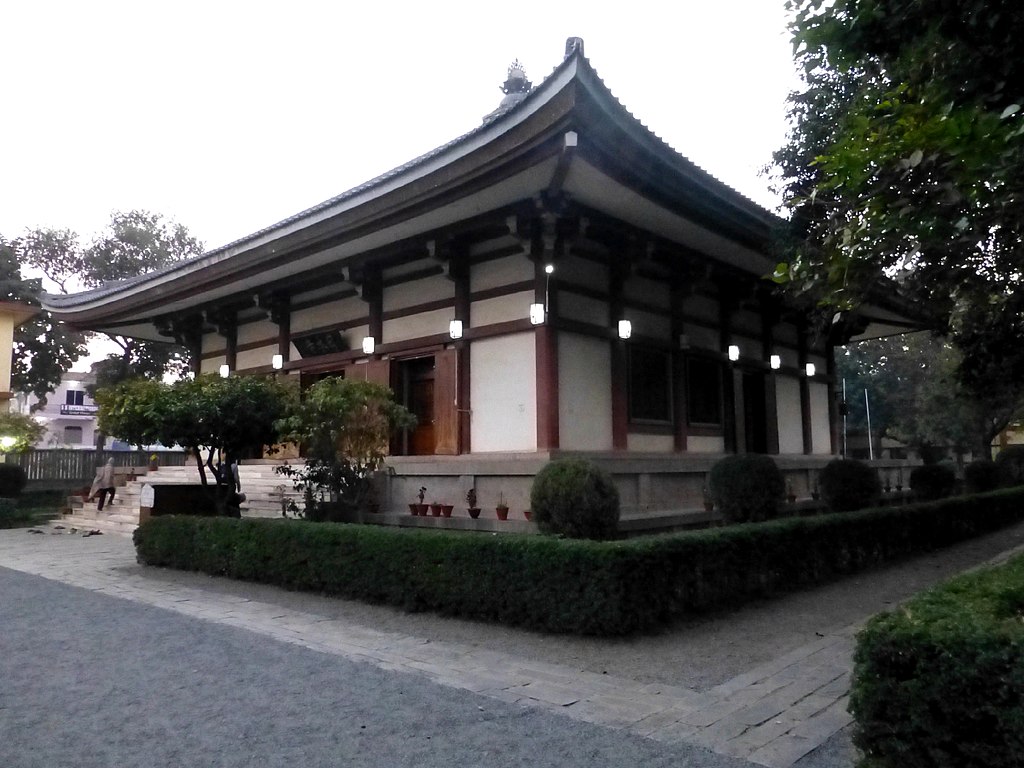
The Indosan Nippon Japanese Temple features traditional Japanese architectural elements, which contrast with the Indian style of many other temples in the region. This unique architecture blends Japanese aesthetics with the spiritual ambience of Bodhgaya.
The temple’s design includes a large pagoda (a characteristic feature of Japanese Buddhist architecture), elegant wooden structures, and large rooftiles that are reminiscent of traditional Japanese shrines. Inside the temple there is a large statue of Lord Buddha.
The Indosan Nippon Japanese Temple provides a serene and peaceful environment for meditation, contemplation, and prayer. It serves as a space where visitors can connect with Buddhist teachings and engage in spiritual practices.
Thai Monastery Bodhgaya
The Thai Monastery Bodhgaya is considered one of the holiest sites for Buddhists worldwide. While it stands as a testament to the deep cultural and spiritual ties between Thailand and India. But also plays a key role in offering a place for Thai Buddhists and others to practice their faith.
The temple complex is primarily associated with Theravada Buddhism, the school of Buddhism followed in Thailand and several other Southeast Asian countries. It serves as a center for meditation, chanting, and Buddhist study. It is also a place where the Thai Buddhist community gathers during significant Buddhist events, including the Vesak (Buddha’s birthday) and other Buddhist festivals.
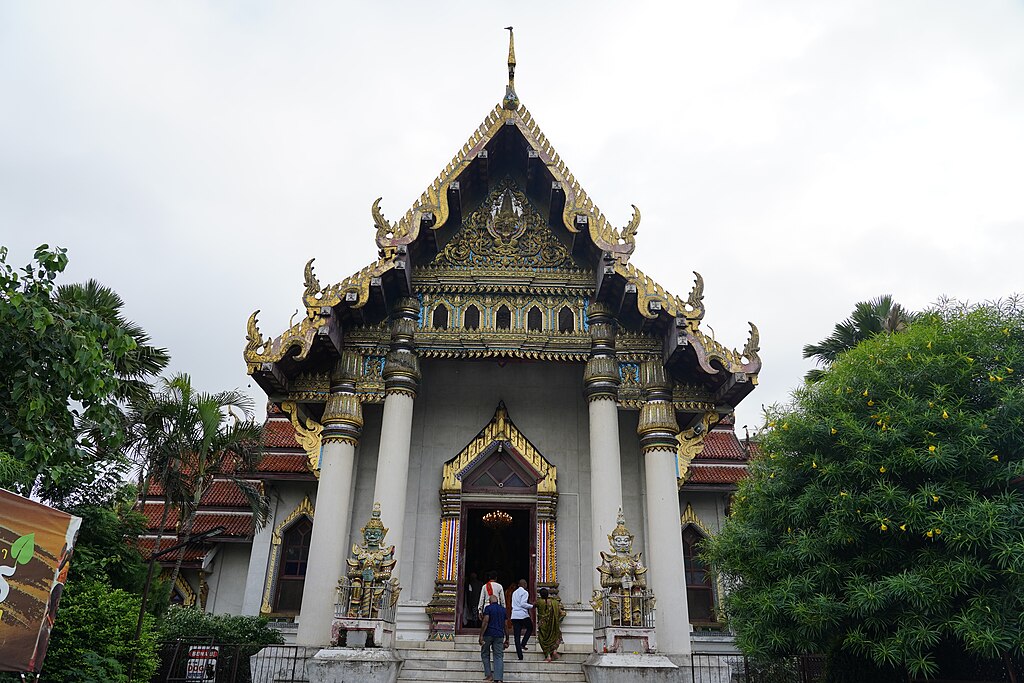
The Thai Monastery features traditional Thai Buddhist architectural elements, which are distinct from the more common Indian and Nepalese styles found in Bodhgaya. The architecture of the monastery typically includes the typical Thai-style pagodas, ornate rooflines, and colorful decorations, creating a visually striking structure that stands out among the other monasteries in the area.
The temple has an elaborate altar with statues of the Buddha, and the interior of the monastery offers a serene and peaceful space for meditation and spiritual practices. The design often emphasizes simplicity, serenity, and mindfulness, consistent with Thai Buddhist principles.
However, the Thai Monastery in Bodhgaya is not only a place of worship but also an important center for Buddhist education. Monks and lay practitioners study Buddhist texts, philosophy, and the teachings of the Buddha. The monastery offers teachings on Theravada Buddhism, including principles like the Four Noble Truths, Noble Eightfold Path, and dependent origination.
The Great Buddha Statue Bodhgaya
It is one of the most iconic and awe-inspiring landmarks in the region. Standing at 80 feet (24 meters) tall, this massive statue of Lord Buddha is a prominent symbol of Buddhist spirituality and a significant pilgrimage site for Buddhists from all over the world. Visiting here reminded me of my visit to the Buddha Point in Thimphu Bhutan.

Amidst all other temples, this statue and it’s premises set the tone for a tranquil and meditative atmosphere. It marks the spot where the Buddha is believed to have achieved enlightenment and represents his teachings of peace, compassion, and wisdom.
The statue, primarily constructed in bronze, depicts Lord Buddha sitting in a meditative posture (or Dhyana mudra), a symbol of inner peace and enlightenment. The figure is shown with a serene and calm expression, embodying the ideal of Buddhist tranquility. The Buddha’s figure is designed with Indian Buddhist iconography, reflecting traditional stylistic elements seen in other important Buddhist monuments, while also incorporating modern engineering techniques.
Royal Bhutanese Monastery Bodhgaya
As the name suggests, among the temples of Bodh Gaya, the Royal Bhutanese Monastery is contributed by the Royal Kingdom of Bhutan. Bhutanese Buddhism, which is primarily Vajrayana in nature, has its own distinct rituals, art, and architecture, which are reflected in the design and activities of the Bhutanese Monastery. Thus, the monastery not only serves as a place for Bhutanese pilgrims to practice their faith but also as a place where visitors can experience the spiritual and cultural heritage of Bhutan through the lens of Buddhism.
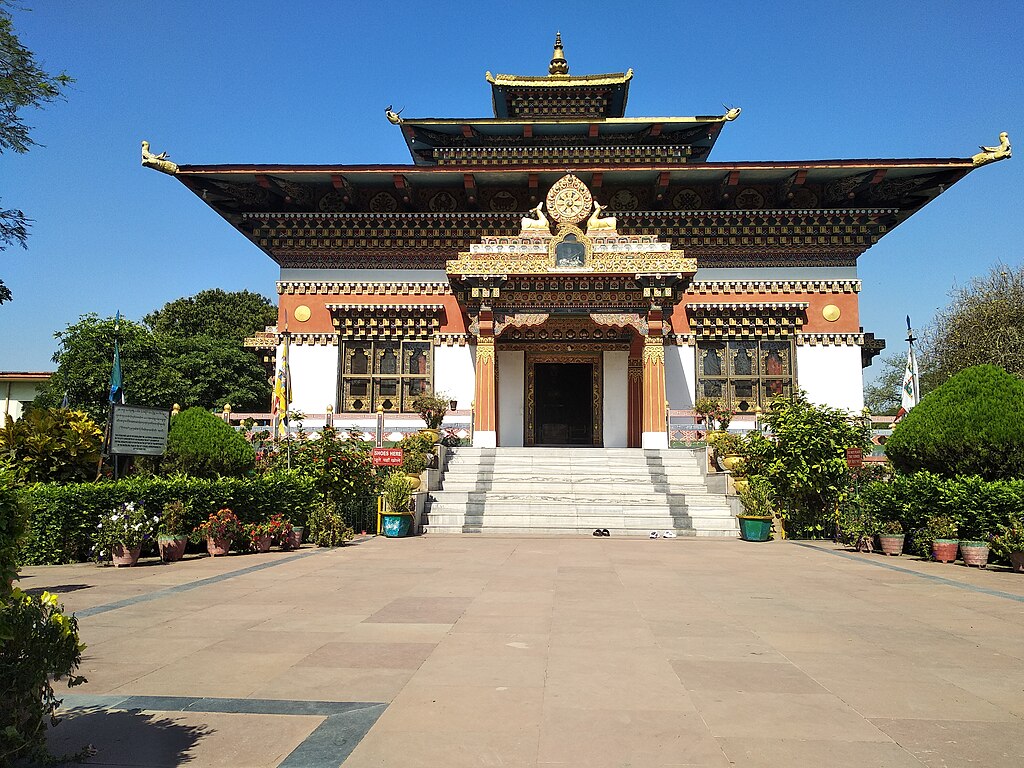
The main architectural elements of this Monastery include –
- Pagoda-like roofs with upward-curving eaves.
- Intricate woodwork and colorful murals that depict Buddhist deities, scenes from the Buddha’s life, and other elements of Vajrayana Buddhist cosmology.
- Stupas (also known as Chortens in Bhutan) are common in Bhutanese Buddhist architecture, and the monastery may have such structures as well.
- Vibrantly painted walls with symbolic colors and motifs reflecting Bhutanese cultural heritage, such as the lotus, the vajra, and other auspicious symbols.
- The monastery is decorated with mandalas and thangkas (scroll paintings), which are used in meditation and religious rituals.
The monastery typically includes prayer halls with large statues of the Buddha and Padmasambhava (also known as Guru Rinpoche), an important figure in Bhutanese Buddhism who is said to have played a significant role in bringing Buddhism to the Himalayas. Visiting here definitely reminded me of my trip to Bhutan where I saw several such monasteries including the one while sightseeing in Thimpu and the other one on our trip to Punakha.
Apart from being a significant place of worship and meditation, the Bhutanese Monastery also provides several educational courses related to Buddhism, teachings related to compassion, impermanence, interdependence, and the path to enlightenment and general guidance to Buddhist tourists.
Chinese Temple Bodhgaya
The Chinese Monastery represents the Chinese Buddhist tradition and serves as a center for worship, meditation, and cultural exchange for Buddhists from China and around the world. The monastery also serves as a cultural bridge between India and China, offering insights into Chinese Buddhist practices, art, and traditions.

The main elements of architecture and design of this monastery include –
- Pagoda-style roof: Like other Chinese Buddhist structures, the monastery is likely to feature a pagoda-style roof, with curved edges, multiple tiers, and intricate eaves that are characteristic of Chinese Buddhist architecture.
- Red and gold accents: The design of the monastery often incorporates vibrant colors, especially red and gold, which are symbolic in Chinese culture. These colors represent good fortune, happiness, and spiritual power.
- Statues and symbols: Inside the monastery, visitors will find statues of Lord Buddha, as well as other important figures in Chinese Buddhism such as Avalokiteshvara (the Bodhisattva of Compassion) and Maitreya (the Future Buddha). These statues are often crafted in a traditional Chinese artistic style, which differs from the Indian or Tibetan depictions of Buddha.

The Chinese Monastery follows the Mahayana tradition of Buddhism, which is one of the two major branches of Buddhism (the other being Theravada, practiced in countries like Sri Lanka, Thailand, and Myanmar). Mahayana Buddhism emphasizes the Bodhisattva path, focusing on the ideal of attaining enlightenment not just for oneself but for the benefit of all sentient beings.
As such, their key practices include chanting, prayer ceremonies, meditation, and the study of sutras (Buddhist scriptures). Apart from this, the monastery also offers significant space for meditations.
Mahabodhi Temple Bodhgaya
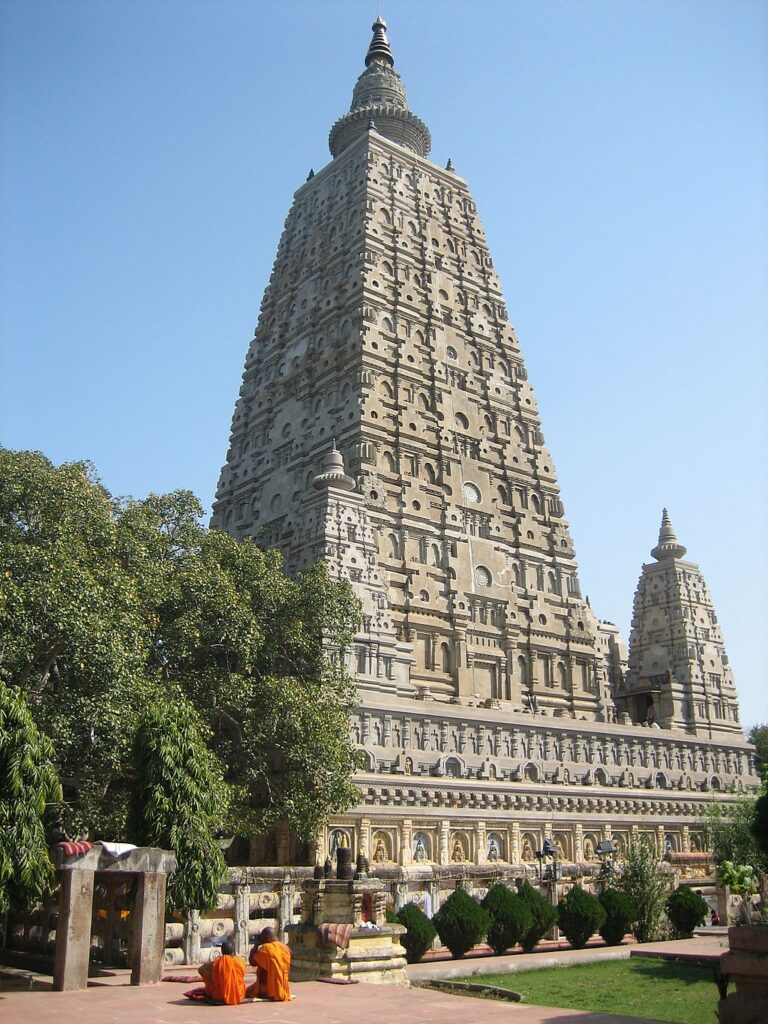
Ofcourse the most important and the most famous of all is the Mahabodhi Temple in Bodh Gaya. It is the main attraction for the visitors. Describing our complete experience visiting the Mahabodhi Temple in Bodhgaya needs a dedicated writeup of its own. So, let me give you a brief introduction to the temple. And soon bring to you the elaborate details.
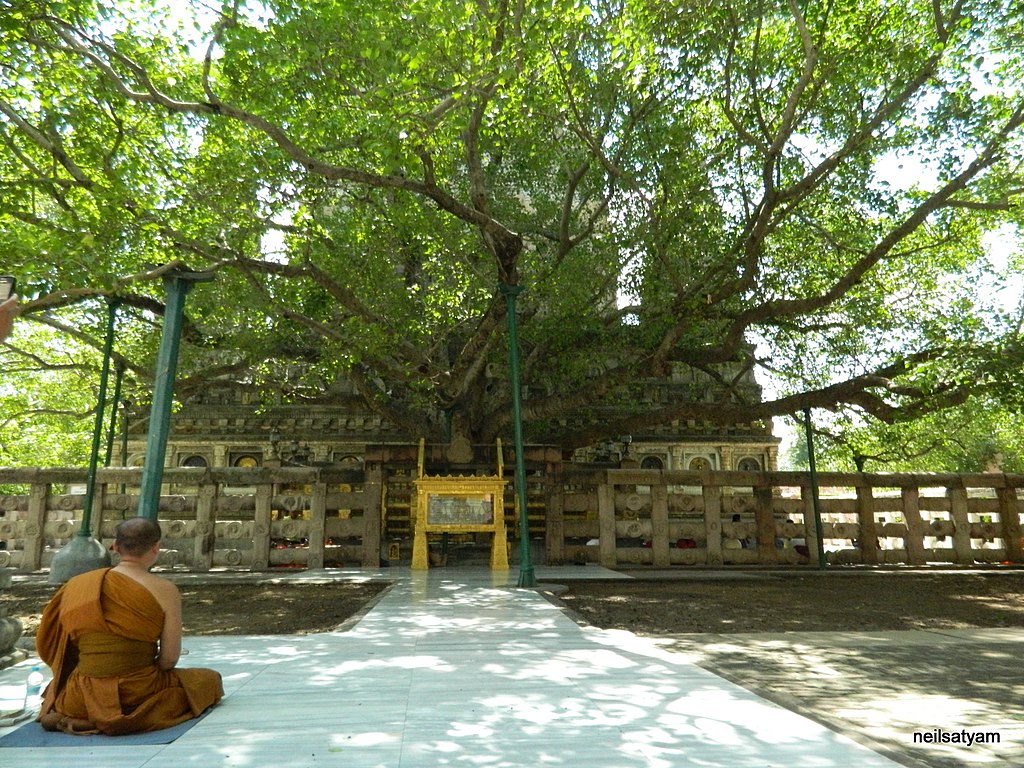
The Mahabodhi Temple is the location where Siddhartha Gautama, the historical Buddha, attained enlightenment under the Bodhi tree around the 6th century BCE. This momentous event occurred under the Bodhi tree, a sacred fig tree, which still exists today in the temple complex. The original structure at this site was built during the reign of Emperor Ashoka (3rd century BCE), a devout Buddhist ruler who made significant efforts to promote Buddhism across the Indian subcontinent. The temple was later renovated and expanded by various dynasties, with the current structure dating back to the Gupta period (around 5th century CE).
The Mahabodhi Temple is an outstanding example of early Indian brick architecture. The main temple is a tall, pyramidal structure, standing at over 50 meters (160 feet). And is crowned with a large golden spire, symbolizing the enlightenment of the Buddha. Which can be seen from far and wide.

The temple complex is centered around the Bodhi tree, which is said to be a descendant of the original tree under which the Buddha attained enlightenment. Pilgrims often meditate under this sacred tree, following in the Buddha’s footsteps.
Apart from this, the temple complex includes several shrines, a massive statue of the Buddha in a seated posture, and various smaller stupas that represent important locations related to the Buddha’s life.
In 2002, the Mahabodhi Temple was designated a UNESCO World Heritage Site due to its spiritual and historical importance.
Other places to see in Bodh Gaya
Apart from the temples of Bodh Gaya, there are several other places of interest that you can visit, if you are staying in Bodh Gaya for at least 2 days. Some of these include –
Butterfly Park Bodhgaya
The butterfly park of Bodhgaya was a chance discovery. As we were looking for some option to engage the kids after having lunch. Right opposite hotel Tathagat where we had our lunch, we spotted the butterfly park. The entry fee was nominal Rs 50 for adults and Rs 20 for kids above 5 years. Inside, it’s more like a garden with different kind of flower beds, each attracting a flock of butterflies.

We rested here for sometime while the kids chased the butterflies. At one end of the park, there’s a large kids play area as well. The park definitely adds a refreshing break while you are visiting the temples of Bodh Gaya. The park also has a small centre where they explain the lifecycle of Butterflies and breed them as well. The entry to this place comes at an additional cost.

Bodhgaya Multimedia Museum
The Bodh Gaya Multimedia Museum is a relatively recent addition to the town’s array of historical and religious attractions, offering visitors an immersive experience into the life of Gautama Buddha, the history of Bodh Gaya, and the Buddhist tradition. The museum uses modern multimedia technology to bring the stories of the Buddha’s life and the significance of the Bodh Gaya site to life in a visually engaging way.
The interactive exhibits in the museum include touch screens, audio and video guides etc. It narrates the story of the life of Buddha and the history of Bodh Gaya. Some sections elaborately talk about the Mahabodhi Temple and the Bodhi Tree. And the best part is that to cater to international tourists, the media is presented in multiple languages.
Archeological Society of India Museum, Bodh Gaya
The Archaeological Survey of India (ASI) Museum in Bodh Gaya is an important museum that showcases the rich archaeological heritage of the region, particularly its Buddhist history. Located near the Mahabodhi Temple Complex (a UNESCO World Heritage Site), this museum provides insights into the historical and religious significance of Bodh Gaya and its surrounding areas, offering a deep dive into the ancient Buddhist sites and artifacts discovered in the region. The main elements of this museum are –
- Buddhist artefacts that date back as far as the Mauryan empire. These include sculptures, inscriptions, coins, pottery, and stupas through which one can easily perceive the history of Buddhism in India and surrounding regions.
- Some of the most notable exhibits are the sculptures of Buddha from different periods in different poses.
- Inscriptions in ancient languages like Prakrit, Brahmi and Sanskrit from ancient texts and historical records, including those related to Emperor Ashoka, who is known for spreading Buddhism across India.
- The museum displays architectural models of the Mahabodhi Temple, Bodhi Tree, and other important monuments in the area
- Many of the artifacts are from archaeological excavations in and around Bodh Gaya, conducted by the Archaeological Survey of India and other institutions which include parts of ancient temples, monasteries.
- A collection of ancient coins, some of which date back to the Mauryan period
Opening hours of the museum are 9:00 AM to 5:00 PM, except on Fridays when it’s closed. Entry fee is nominal.
Dungeshwari Hills
The Dungeshwari Hills, also known as Dungeshwari Cave Temples or The Uruvela Caves, are an important and lesser-known pilgrimage site. These are located approximately 12 kilometers northeast of Bodh Gaya in Bihar, India. The Dungeshwari Hills are significant in the Buddhist tradition. Because its the place where Siddhartha Gautama (the Buddha) spent several years in intense meditation. And ascetic practices before attaining enlightenment under the Bodhi tree in Bodh Gaya.
The Dungeshwari Hill area features several caves. Which are now transformed into temples and meditation spots. Some of the caves contain images of the Buddha. Thus, reflecting the site’s religious importance.
Also, the Dungeshwari Temple at the summit of the hills is dedicated to Dungeshwari Devi – an ancient deity of the region.
Apart from the historical significance of the Dungeshwari Hills, they also have immense natural beauty. And last but not the least, the panoramic views that you get from the top of the hills definitely makes visiting here worth it.
Muchalinda Lake
A serene and spiritually significant site located near Bodh Gaya, Bihar, India. Muchalinda Lake is deeply connected to the life of Gautama Buddha. And is part of the Buddhist pilgrimage circuit. Actually, the lake is named after the Muchalinda Naga (a serpent king). Who, according to Buddhist tradition, protected the Buddha during a critical moment of his enlightenment journey.
According to Buddhist scriptures, after attaining enlightenment under the Bodhi tree in Bodh Gaya, Siddhartha Gautama (the Buddha) sat in meditation for several days. And during this time, he faced a severe storm. Then the Muchalinda Naga, a serpent king, emerged from the lake. And coiled around the Buddha. Thus providing shelter with his hood, protecting the Buddha from the rain and wind. Actually, this reflects the protective nature of the Nagas.
Near the lake, you will find also a statue of the Muchalinda Naga. This statue often depicts the Naga king coiled around the Buddha. Thus symbolizing the moment of protection during the storm.
Vishnupad Temple Gaya

The Vishnupad Temple is an ancient and significant Hindu temple located in Gaya, Bihar, India, about 13 km from Bodh Gaya. It is one of the holiest temples in the region, particularly revered by Hindus, and is dedicated to Lord Vishnu. It is believed to be the site where Lord Vishnu’s feet (known as “Vishnupad”) are imprinted. The name “Vishnupad” itself refers to the “footprints of Vishnu,” which is a significant feature of the temple. And is partifcularly significant for the “Pind Daan” ritual that Hindus perform for their ancestors. This temples definitely needs a writeup of it’s own. So, I will soon dedicate a post to it.
Gaya Ghat

The Gaya Ghat is one of the prominent ghats located in the city of Gaya, Bihar, India. Situated on the banks of the Falgu River, it holds immense religious and cultural significance for Hindus, particularly in the context of performing the Pind Daan ritual, which is believed to provide salvation (Moksha) to the souls of deceased ancestors.
Apart from it, the ghat also has immense social significance. As it is a place for social gatherings, festivities and fares. Particularly the Pitrapaksha Mela, an annual event held in September. During this period, millions of Hindus come to Gaya to perform Pind Daan in honor of their ancestors.
What is the best time to visit Bodh Gaya
The best time to visit Bodh Gaya will be the winter months from November to March. The summer months are very harsh here. And it is not so convenient to hop around the temples during the monsoons. When we visited here in the second week of October, it was still pretty hot during the day.
How to reach Bodh Gaya

The nearest airport to Bodh Gaya is Gaya International Airport (GAY), about 7 kilometers from the town. This airport is connected to important cities of India like Delhi, Varanasi etc. It also has international flights catering to passengers particularly from South East Asian countries from where most of the Buddhist tourists ply. However, the number of flights is not many.
If you don’t get a direct flight to Bodh Gaya, the next best option is to fly into the Patna Airport. It takes around 2 hours to reach Bodh Gaya from Patna by road. The highway conditions are excellent. Even Varanasi to Bodh Gaya by road will take you around 4 hours. You can self drive, or, hire a taxi for your visit to Bodh Gaya.
By train, you can reach the Gaya railway junction and take an e-auto to Bodh Gaya which is just 5km from the town of Gaya. Bodh Gaya is well-connected by bus from major cities in Bihar and nearby states. There are direct buses from Patna, Gaya, and other towns. From Gaya, you can take a local bus or a taxi to Bodh Gaya.
If however, you don’t want to go through the exercise of sorting your commute to Bodh Gaya, there’s good news. Many travel agencies have started offering packed tours to Bodh Gaya. You can book one online that will take care of your commute, lodging, food and exploring Bodh Gaya.
Where to stay in Bodh Gaya

From budget accommodation to luxury hotels, Bodh Gaya has all kind of accommodation to cater to it’s guests. And the good thing is that even the most luxury hotels are very affordable. We stayed at the Bodhi Palace Resort in Bodh Gaya. Which was located right along the highway, centrally from the temples of Bodh Gaya as well as the old town of Gaya. Bodh of which we wanted to explore.
Some other good options are Marasa Sarovar Premium Bodh Gaya, Oaks Bodh Gaya, Regency Hotel etc. Here’s the complete list of hotels in Bodh Gaya to browse and choose from.
Where to eat in Bodh Gaya
There are several restaurants in Bodh Gaya. Particularly on the main road leading to the Mahabodhi Temple. You will get North Indian, South Indian, Chinese, Japanese and several other country’s cuisines on the menu. We had our lunch at one such restaurnat – Hotel Tathagat. The food was good. And there was a Japanese woman on the adjacent table who made this sweet gesture of gifting our kids little origami birds!! Some of the famous cafes and restaurants of Bodh Gaya are Tibet Om Cafe, Nirvana Veg Cafe, Maya Heritage Restaurant and Magadh Sweets. We had our breakfast and dinner at the in house restaurant in Bodhi Palace Resort.

General tips on visiting the temples of Bodh Gaya and other tourist places
- You need to visit inside the temples barefoot. So wear a footwear that you can easily slip in and out of like crocs or flip flops.
- Even if you are driving to Bodh Gaya, the best way to visit the temples of Bodh Gaya will be using an e-rickshaw as they can ply through even the narrow lanes very easily.
- Wear a hat and carry ample water with you during the day, particularly if visiting in months other than November to March.
- You will find a lot of persistent beggers near almost all the temples, you can ignore them. Sadly, I found them persistently asking people for money, particularly foreign tourists. However, you can politely refuse them and they cause no harm. At least they don’t try to scam you or anything like the scammers we saw on the streets of Venice or during our trip to Paris.
- The only difficulty that one might face is lack of toilets. There are some in Mahabodhi Temple Complex. And then you can use the ones in the restaurants where you stop for food.
Shopping in Bodh Gaya
You will get ample of options for souvenir shopping in Bodh Gaya. Besides each temple, there are stalls selling handicrafts, refrigerator magnets, idols of Buddha in stone, brass and clay and many more small items. You must bargain when buying from these stalls. For a fixed-price shopping experience, head to the government emporiums in the main market on the road leading to Mahabodhi Temple.
You can also buy textiles here. From Kashmiri Pashmina cloths and shawls to fine cotton and silk sarees and dress materials.
Visit the Tibet Refusee Market for beaded jewellery, handbags and other such items.